What is the aorta?
The aorta is the major artery that supplies blood throughout the whole body. The aorta carries blood from the heart to the chest and abdomen and it then splits into two branches which supply blood to both legs.
What is an aneurysm?
An aneurysm is an abnormal weakening and ballooning in the wall of an artery.
The most common aneurysms occur in the abdominal aorta located just below the arteries to the kidneys. The major concern with abdominal aortic aneurysms (AAA) is that they can burst (rupture) causing severe internal bleeding which is life threatening. The risk of rupture however is very small if the aneurysm is below 5cm in diameter. Once the aortic aneurysm reaches above a diameter of 5 cm treatment is recommended.
OR Request an Appointment
Causes of Aortic Aneurysms
Normal Aorta
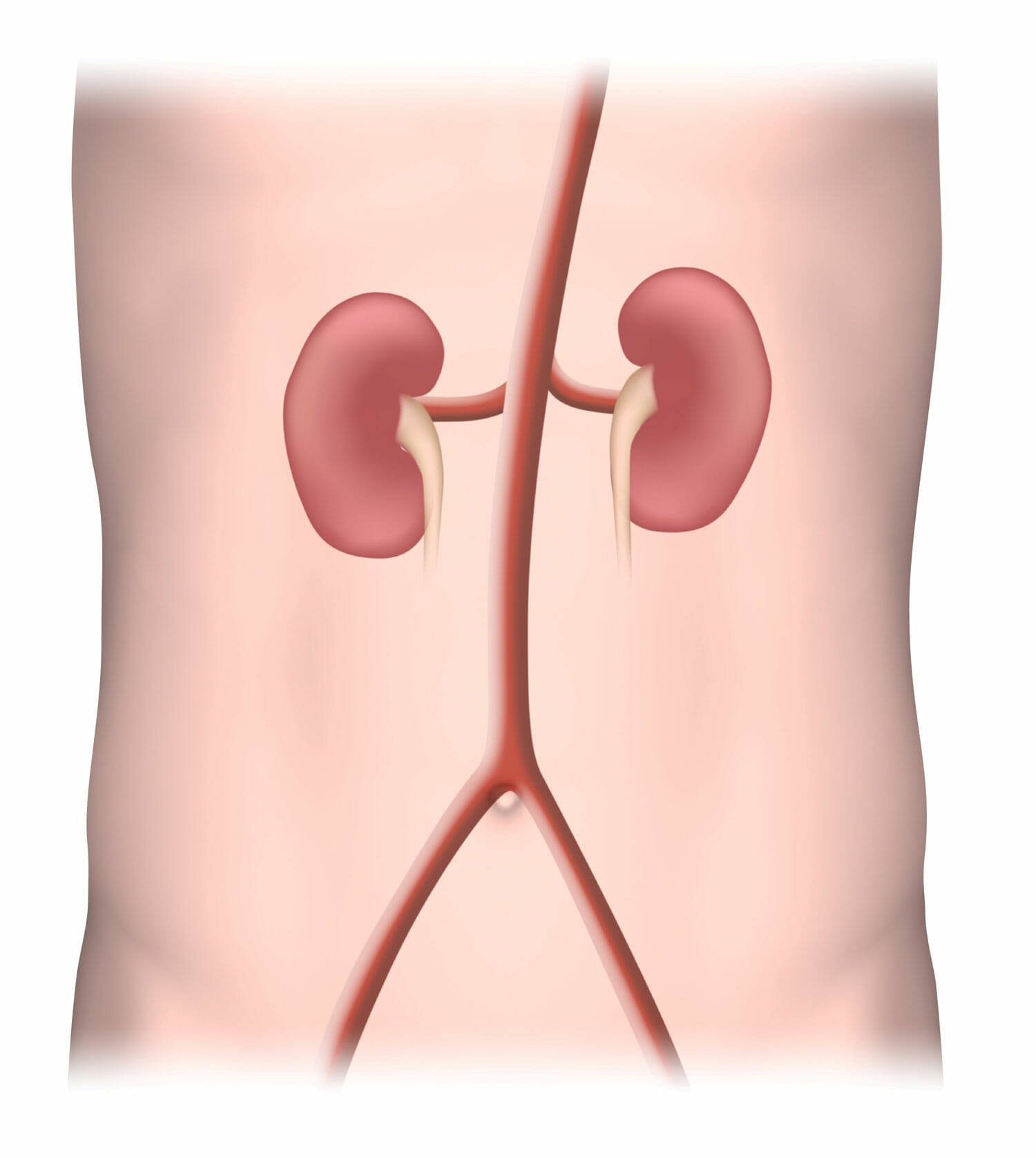
Aorta with Abdominal Aneurysm
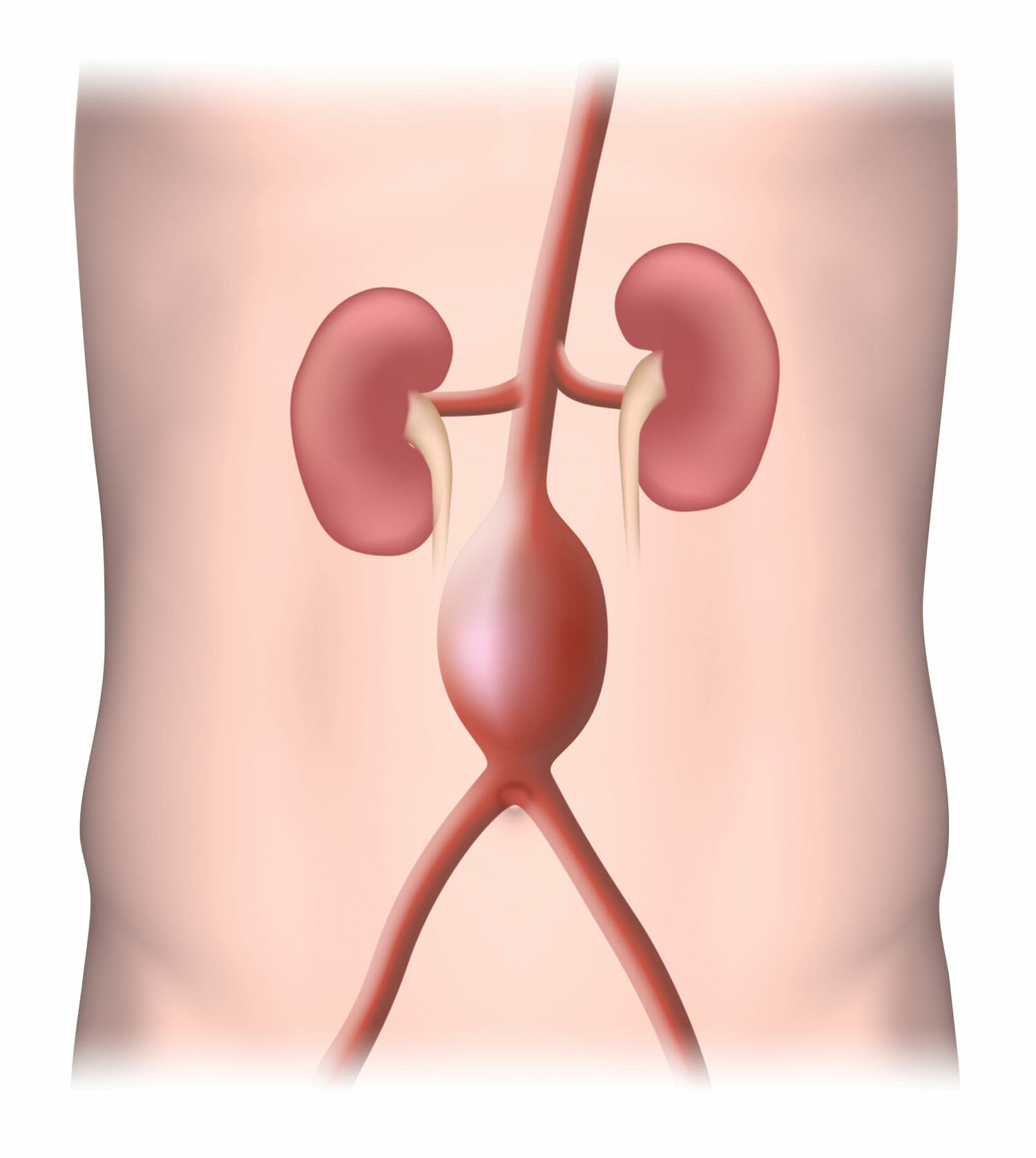
Diagnosis of Abdominal Aortic Aneurysm (AAA)
An AAA is often picked up either by an abdominal examination or an incidental finding on a radiological test such as an ultrasound or CT scan of the abdomen.
Once an aneurysm is diagnosed, referral to a Vascular Surgeon is appropriate so that monitoring of the aneurysm is undertaken until it reaches 5 cm in diameter at which stage repair is performed.
If the aneurysm is above 5cm on initial presentation repair will occur as soon as possible.
Treatment of Abdominal Aortic Aneurysm (AAA)
Treatment of AAA’s is mainly performed by the minimally invasive technique of stent graft insertion. Stent grafts are tubes made from Dacron or polytetrafluoroethylene (PTFE) with a titanium or stainless steal framework. These stents are placed inside the artery (endoluminal stent) and work by allowing blood flow through the stent excluding the aneurysm from blood flow which allows it to shrink in size.
Dr Stanley treats at least 90% of patients presenting with an AAA via an endoluminal stent graft. This procedure occurs through two small incisions in the groin performed under a general anaesthetic and requires the patient to be in hospital for 2-3 days following surgery.
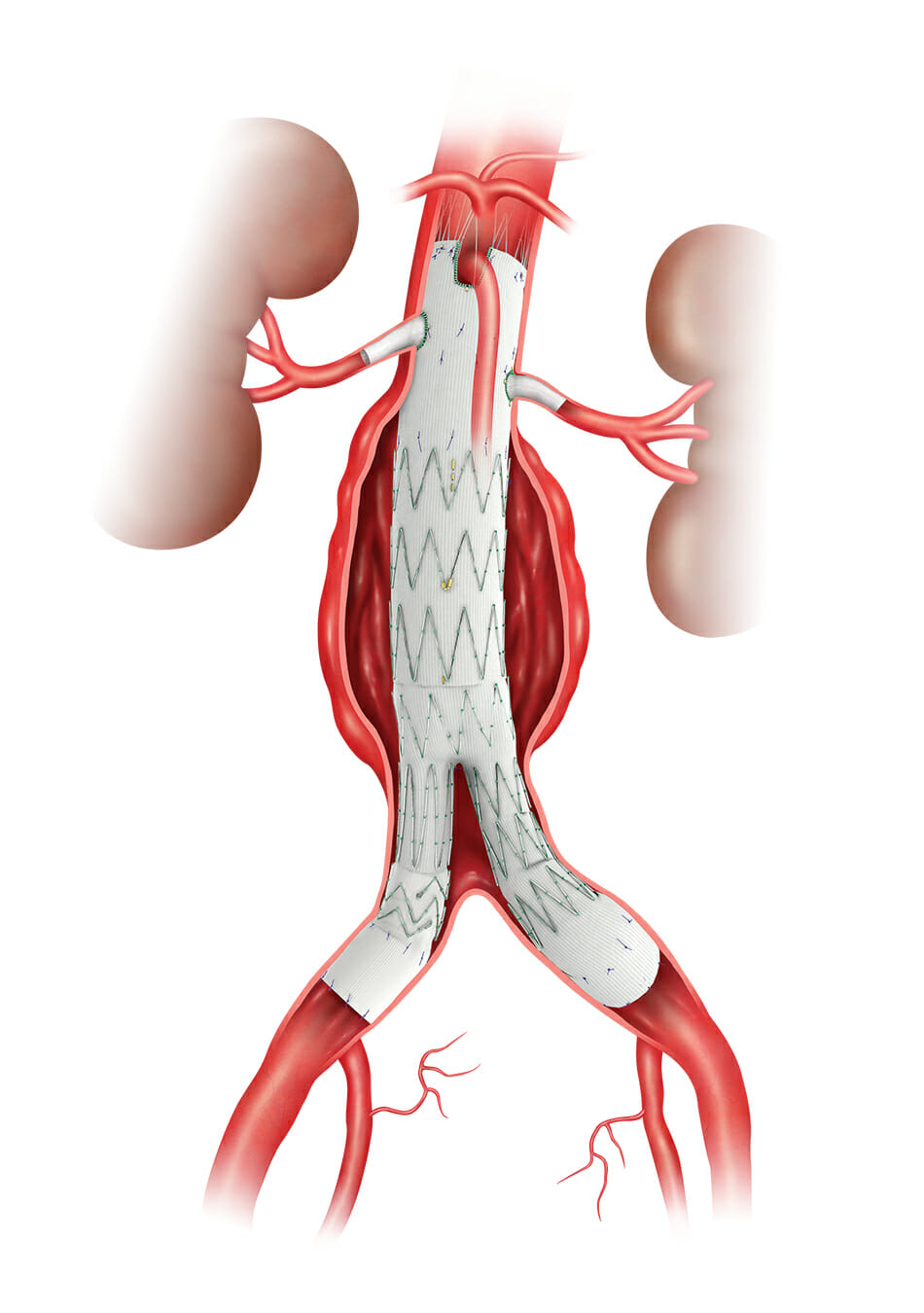
Fenestrated Endoluminal Grafting repair of Abdominal Aortic Aneurysm (AAA) In 10% of patients with an AAA the treatment is more complicated and a high level of planning and surgical skill is needed.
Dr Stanley has significant experience and was involved in the development of the technique to repair these more complicated aortic aneurysms. This advanced technique is called Fenestrated Endoluminal Grafting and allows surgeons to treat aortic aneurysms not only below the renal arteries but also aneurysms which involve the renal arteries and the arteries to the bowel and liver.
The development of fenestrations or holes in the stents allows blood flow to be directed through the stent (or endoluminal graft) and into the branched vessels maintaining flow to vital organs whilst ensuring that blood moves away from the aneurysm. Therefore blood flow through the aorta is maintained and diverted from the aneurysm preventing rupture.
Dr Stanley has taught this advanced Fenestrated Endoluminal Grafting technique to Vascular Surgeons in Australia, Asia and South Africa.
Very rarely some abdominal aortic aneurysms are not suitable for stent graft repair and require open surgery through an abdominal incision to fix the aneurysm.
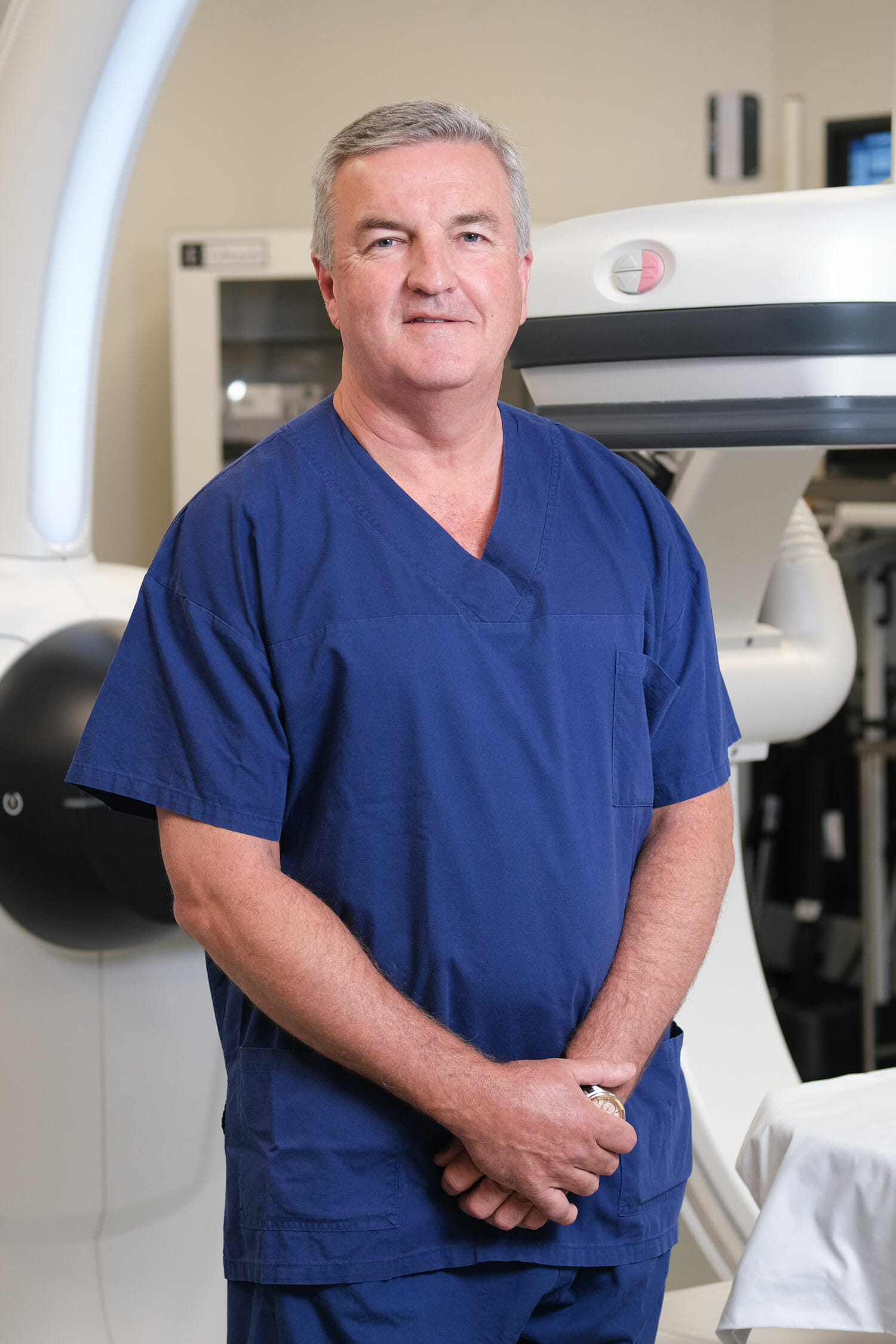
Dr Stanley was also the first surgeon in Australia to perform a stent repair of an aneurysm of the arch of the aorta, just above the heart, whilst maintaining blood supply to the carotid arteries to the brain.
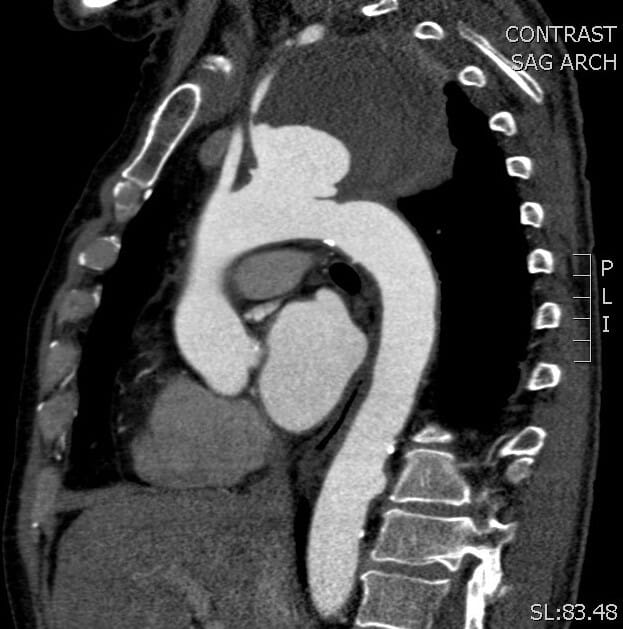
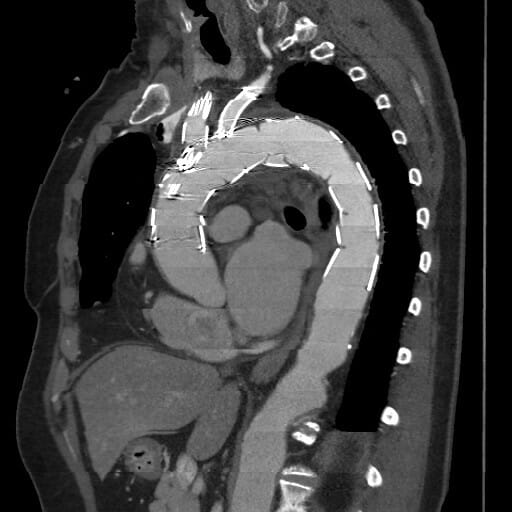
Thoracic Aneurysm Repair
Thoracic aneurysms are life threatening and can occur due to risk factors such as hypertension, high cholesterol, age, smoking and previous thoracic dissection which are often associated with connective tissue disorders (eg Marfan Syndrome).
Dr Stanley has extensive experience in treating thoracic aneurysms with stent graft repair. Brendan was the first surgeon in Australia to repair an aneurysm involving the Arch of the Thoracic Aorta which sits just above the heart, with a stent graft. This procedure involves stopping the heart during deployment of the stent to place it in position accurately. This highly advanced stent procedure also requires that the stent graft is designed and manufactured specially for a patient so that there is an accurate placement of branches to maintain blood supply to the brain via the carotid artery.
Thoracic aneurysms need treatment when they reach 6 cm in diameter however there are significant risk factors associated with repair and each patient needs individual assessment as to the best treatment and the appropriate timing of surgery.
